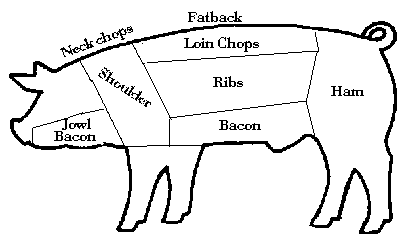
Nutrition facts are not always the end-all-to-be-all value on the food we eat. Shocking right? Who knew that values on food labels, especially entrees from restaurants, could be incorrect? There have been numerous studies about this matter. One of the more recently published ones took a look at the calorie contents of food labeled as being "light". For instance, the "lighter fare" options at restaurants such as Denny's and Applebee's, and pre-packaged foods like Lean Cuisine.
The calorie content we see on the labels is what they refer to as "metabolizable energy." This energy is the estimated amount of calories that one might expect their body to actually be able to get from the given food. The actual content of the food is the "gross energy," which is calculated from the macronutrients (fat, carbohydrates, and protein) listed by the company for a given product. Gross energy is what was actually measured in this study.
You may have noticed this before, but not all companies list their complete nutrition facts for macronutrients. In these cases the researchers visited calorieking.com to find more complete facts. The reasoning for choosing this website is that registered dietitians are employed there to perform independent calculations and include using the USDA database for information on ingredients. For this study they also adjusted the calories for the portion size they were given to the portion size it was suppose to be. Given all this, how far off were the labels the company gave for these foods compared to what the researchers found?
Restaurants, on average, had 18% more calories than stated in their foods. In a couple cases though, the food contained up to twice the calories stated! In addition to that, free side dishes that come with main entrees can add over 200% of the calories stated on the meal. The major offender of both of these are the Denny's grits and white toast (both with butter) that come with the center cut sirloin and eggs.
Frozen meals found at the grocery store tended to have only be 8% higher in calories. The interesting thing about this is that USDA has a 20% ceiling on pre-packaged food labeling (while no such limit exists for restaurant foods). This means that foods can off up to 20% from what they have on their labels. Now the question is: why do they have such a limit?

I talked to Scott at Oscar Mayer; he works in their Nutrition Labeling Department. As it turns out, not all the food they process is exactly the same. Take for example a pig (being Oscar Mayer they sell a lot of them). A pig that is slaughtered in winter is going to have a way different body composition than a pig in summer. Pigs obviously would have a higher body fat percentage in winter than in summer. Seasons not only affect animals, but plants as well. Since you can't just keep slaughter and harvesting to only certain times of the year, no two pigs are ever the same, and it'd be expensive to change labels each time a product is produced, there is a little leeway. What can be used though to keep it close are databases, made by private companies and the USDA, which catalog just about very food and ingredient. These programs can be used to compare your lab results and calculations to.
What you can take away from this is:
1) Be weary of nutrition labeling from restaurants. Not only are you leaving portion size up to them, but you are also leaving preparation technique to them too. They also may not be including the sides you're getting with the meal in the total given.
2) Even though labeling may be off on pre-packaged food, it won't be as far as in restaurants. But take this with a grain of salt, even a small positive energy balance each day can lead to weight gain. Keep an eye on what you eat, cook for yourself, and keep active!
No comments:
Post a Comment